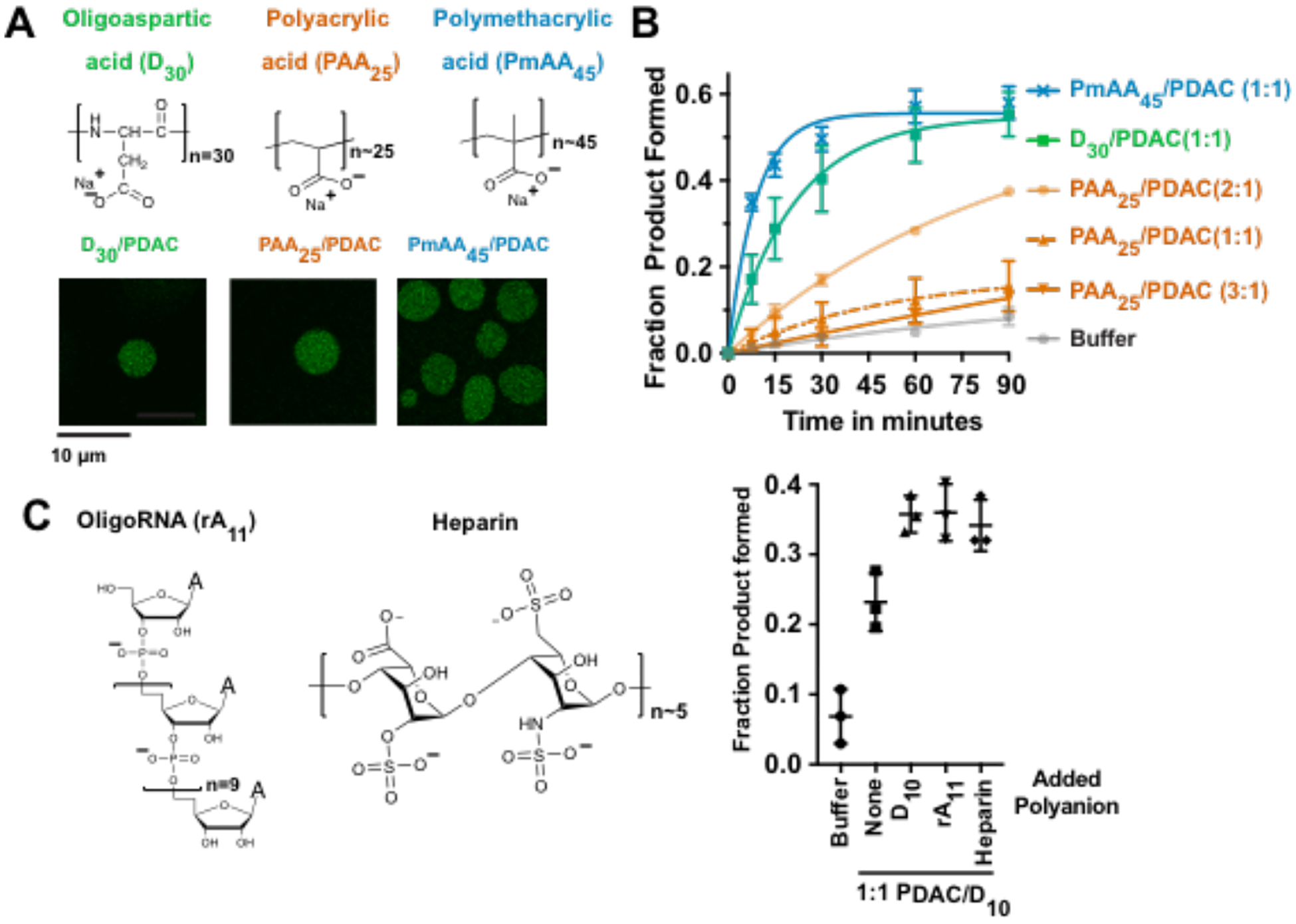Figure 4.

Diverse polyanions support ribozyme catalysis. (A) Structures of polyanions (top) and images of coacervates in 10 mM PDAC at charge-matched condition (bottom). Oligoaspartic acid (D30) is green, polyacrylic acid (PAA25) is orange, and polymethacrylic acid (PmAA45) is blue. Alexa-488-labelled HHRz substrate was added to 0.25 μM. (B) Kinetics of hammerhead cleavage in coacervates containing 10 mM total positive charge from PDAC and total negative charge from different polyanions as indicated. Reaction in the absence of coacervate is gray (buffer). (C) (Left) Structures of heparin and oligoRNA (rA11). (Right) Fraction product formed after 30 min in the absence of coacervates (Buffer) or in coacervates containing D10/PDAC at 1:1
